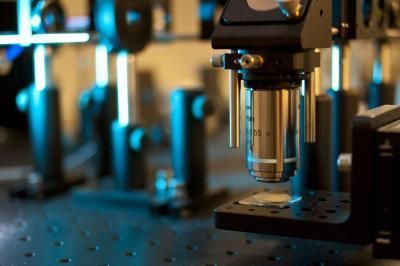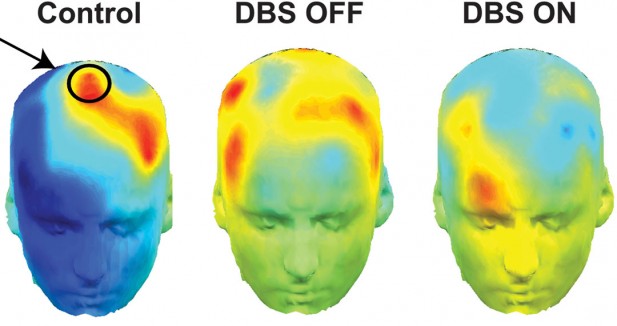New tweezers can reach smaller particles and keep their cool

© HarvardOptical table in research lab
Scientists have been working on ways for decades to trap tiny microscopic parts of a cell. Today, scientists are going even further with the ability to trap even smaller nanoscale particles using optical tweezers. The original optical tweezers used on microscopic particles had issues with overheating that made them impractical for use with smaller nanoscale particles.
Engineers at Harvard have been able to create a device that makes it easier to isolate nanoparticles like viruses and tiny individual cellular components. The optical tweezers use light from a laser to trap particles. The light is shined through a microscope and the new design prevents overheating that was common in older designs.
"We can get beyond the limitations of conventional optical tweezers, exerting a larger force on a nanoparticle for the same laser power," says principal investigator Ken Crozier, Associate Professor of Electrical Engineering at the Harvard School of Engineering and Applied Sciences (SEAS).
The next generation optical tweezers are being called
plasmonic nanotweezer and have an integrated heatsink. The smaller the particles scientists are trying to trap, the more laser energy is needed. The problem was that the researchers found that the higher power laser would cause the water that the particles they wanted to trap were suspended in to boil. The boiling occurred even when the team used a heatsink made up of tiny gold discs submerged into the water.
The team found that replacing the sheet of glass with gold discs on it with a sheet of silicon coated in copper and gold with raised gold pillars they were able to dissipate the heat from the laser. That means the water didn't boil and the particles the scientists wanted to trap were reachable.
"The gold, copper, and silicon under the pillars act just like the heat sink attached to the chip in your PC, drawing the heat away," says lead author Kai Wang (Ph.D. '11), who completed the work at SEAS and is now a postdoctoral fellow at the Howard Hughes Medical Institute.
The team also found that they were able to rotate the trapped particles by simply rotating the linear polarizer on the optical table where the experiments were conducted. The electromagnetic field used in the experiments moved at 1014 rotations per second. However, the particle rotated at a velocity of about five rotations per second due to fluid drag. The team calls that phenomenon a terminal velocity.
Back in 2009, acoustic tweezers were being used to target parts of a living cell.

